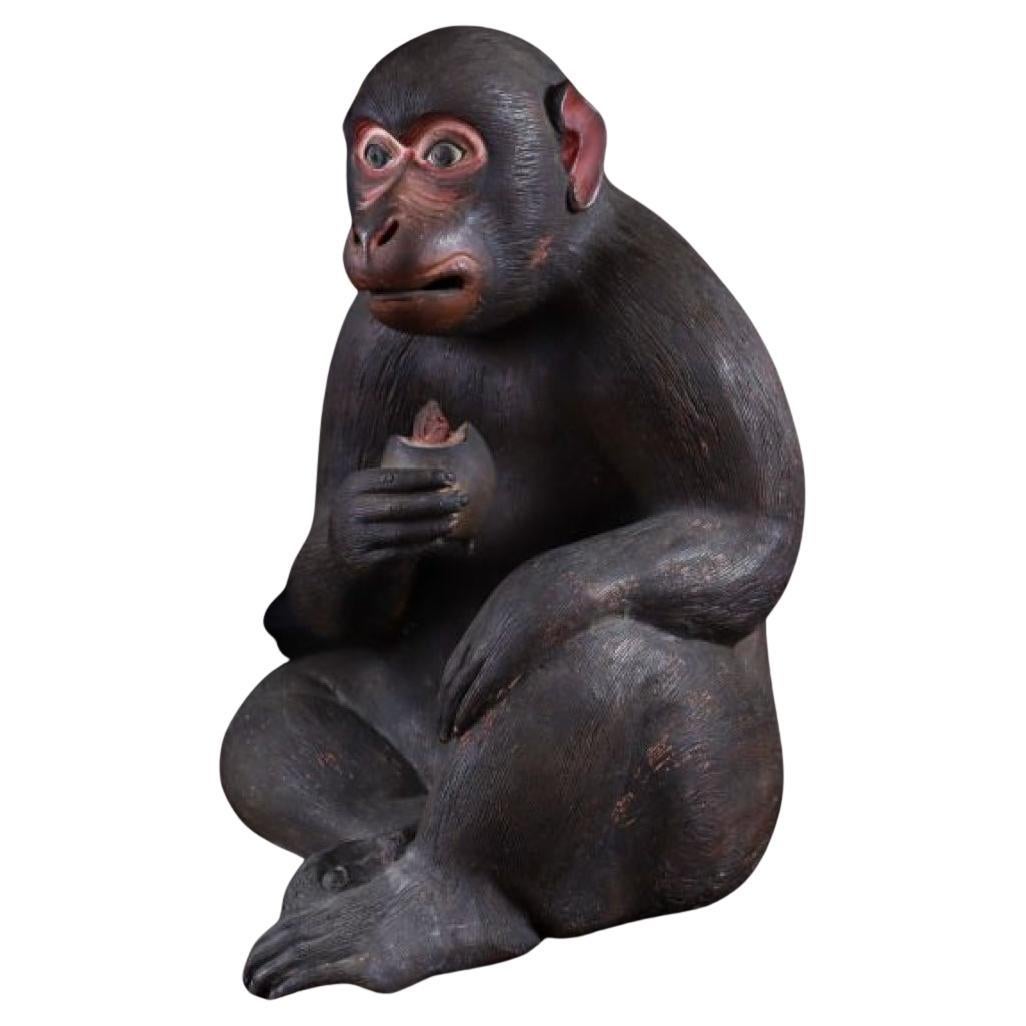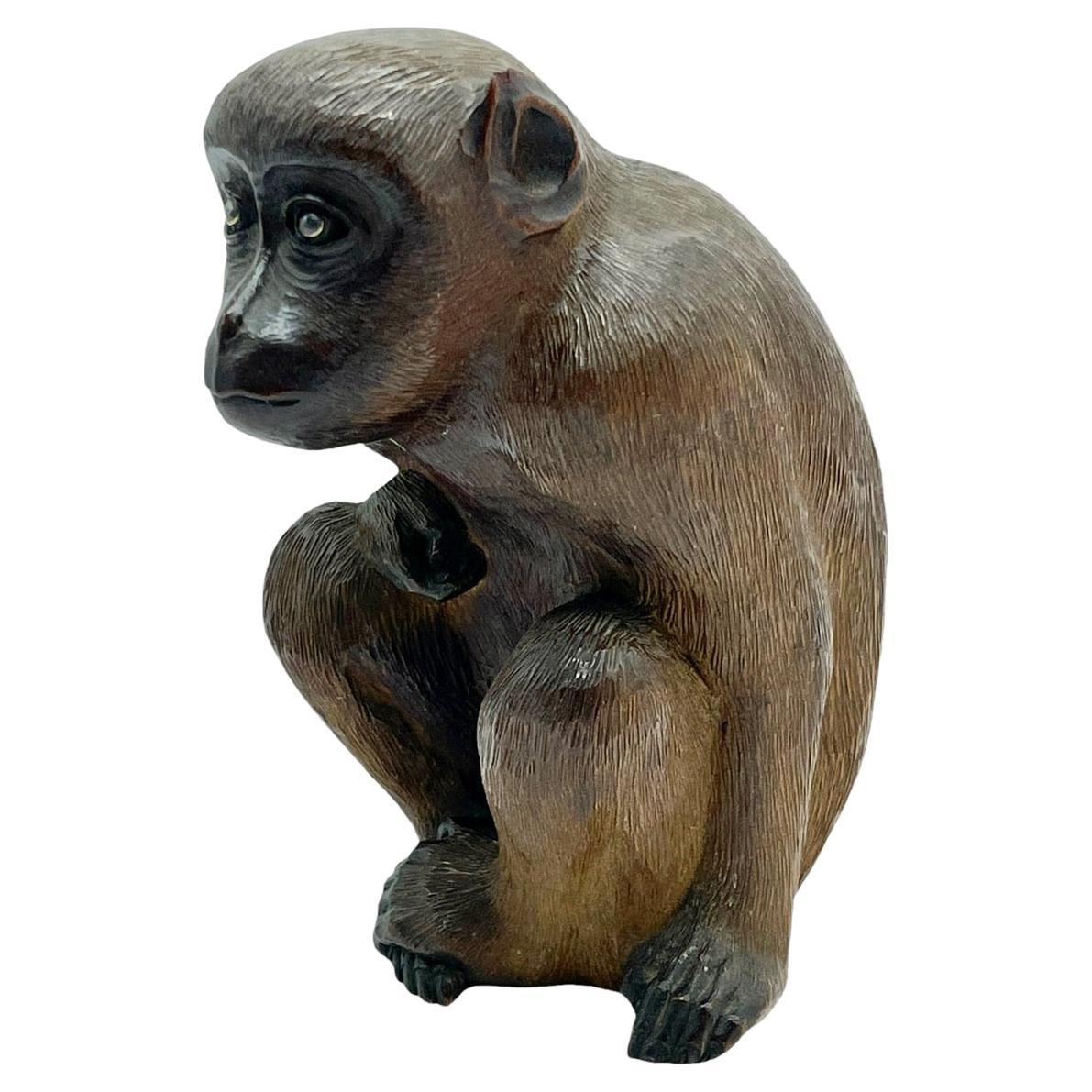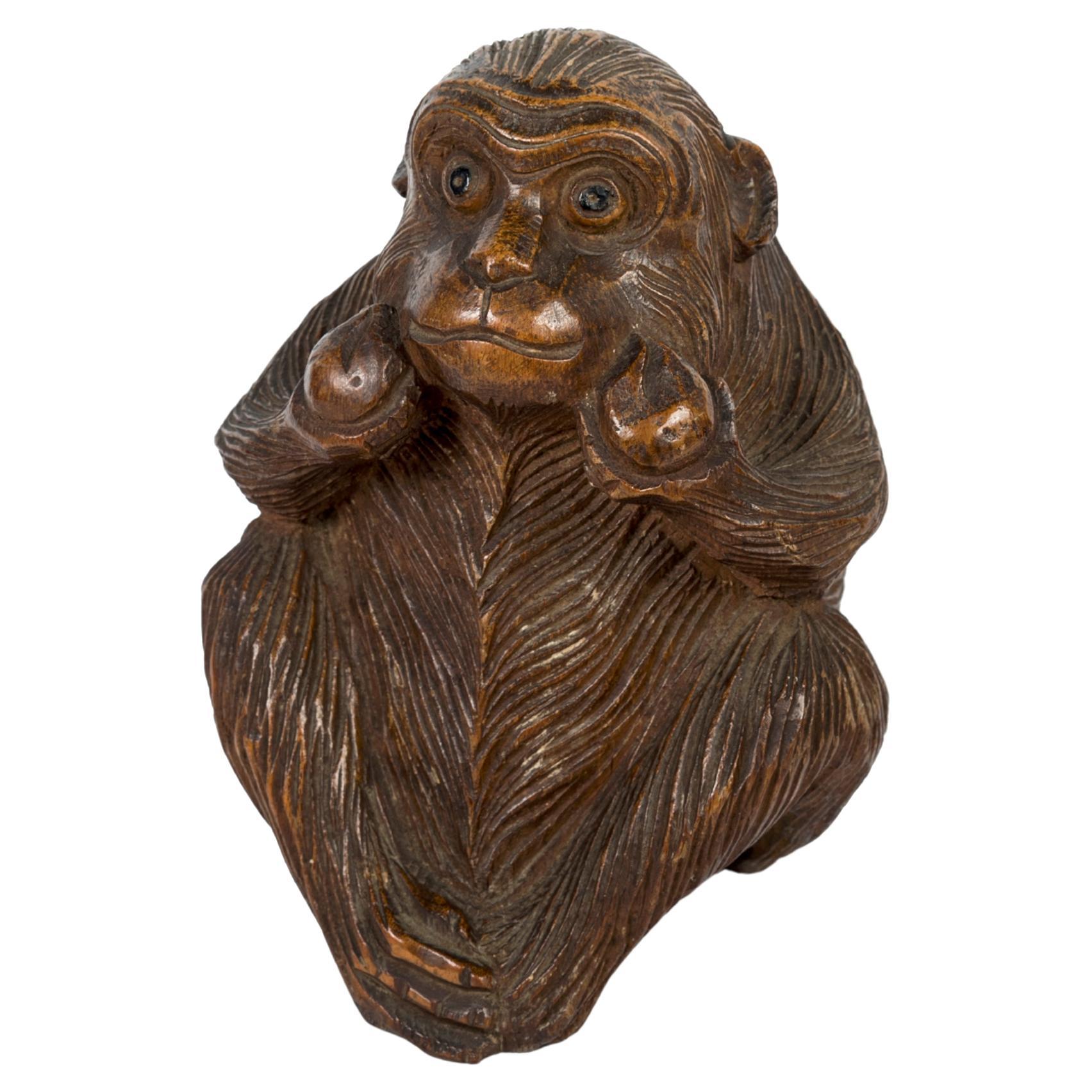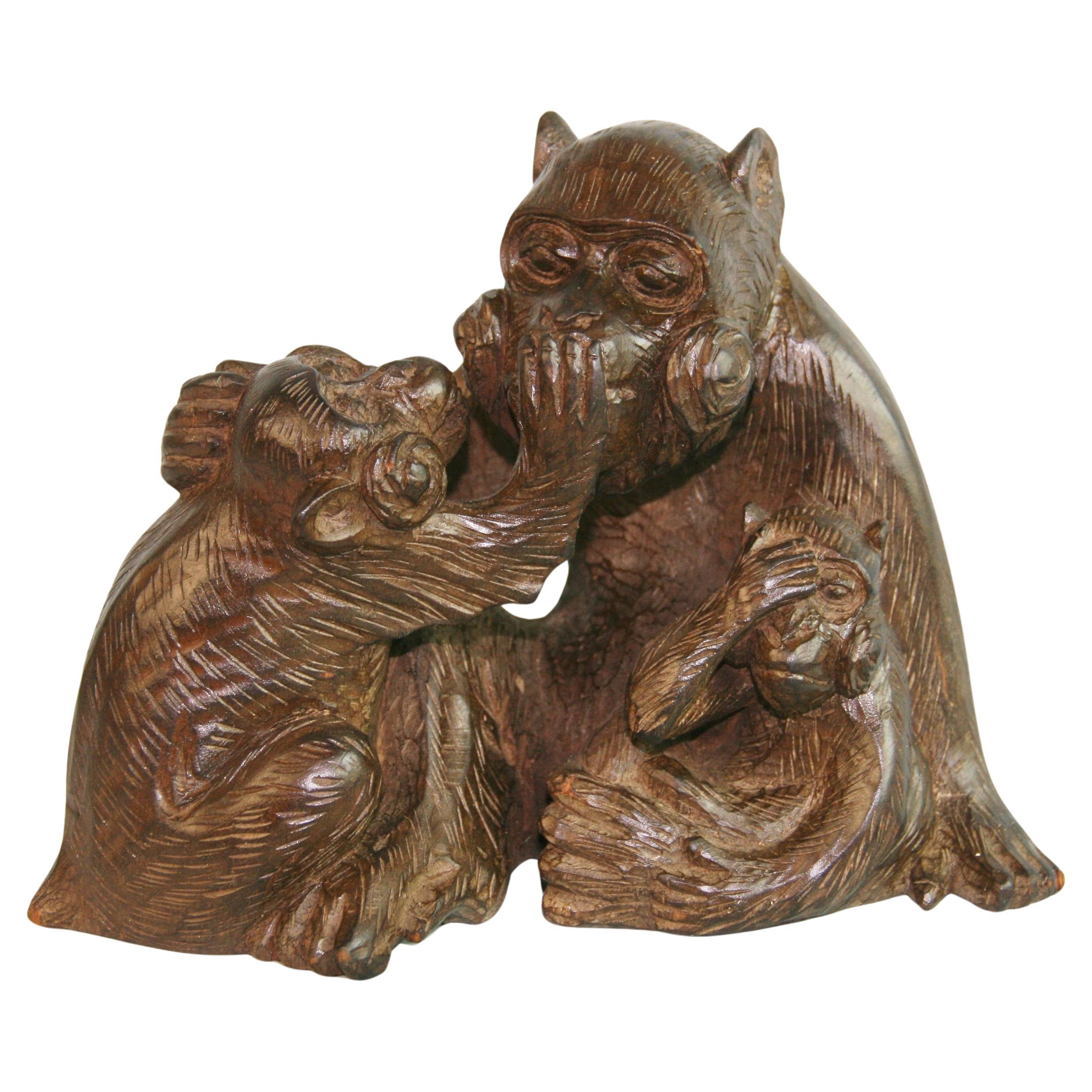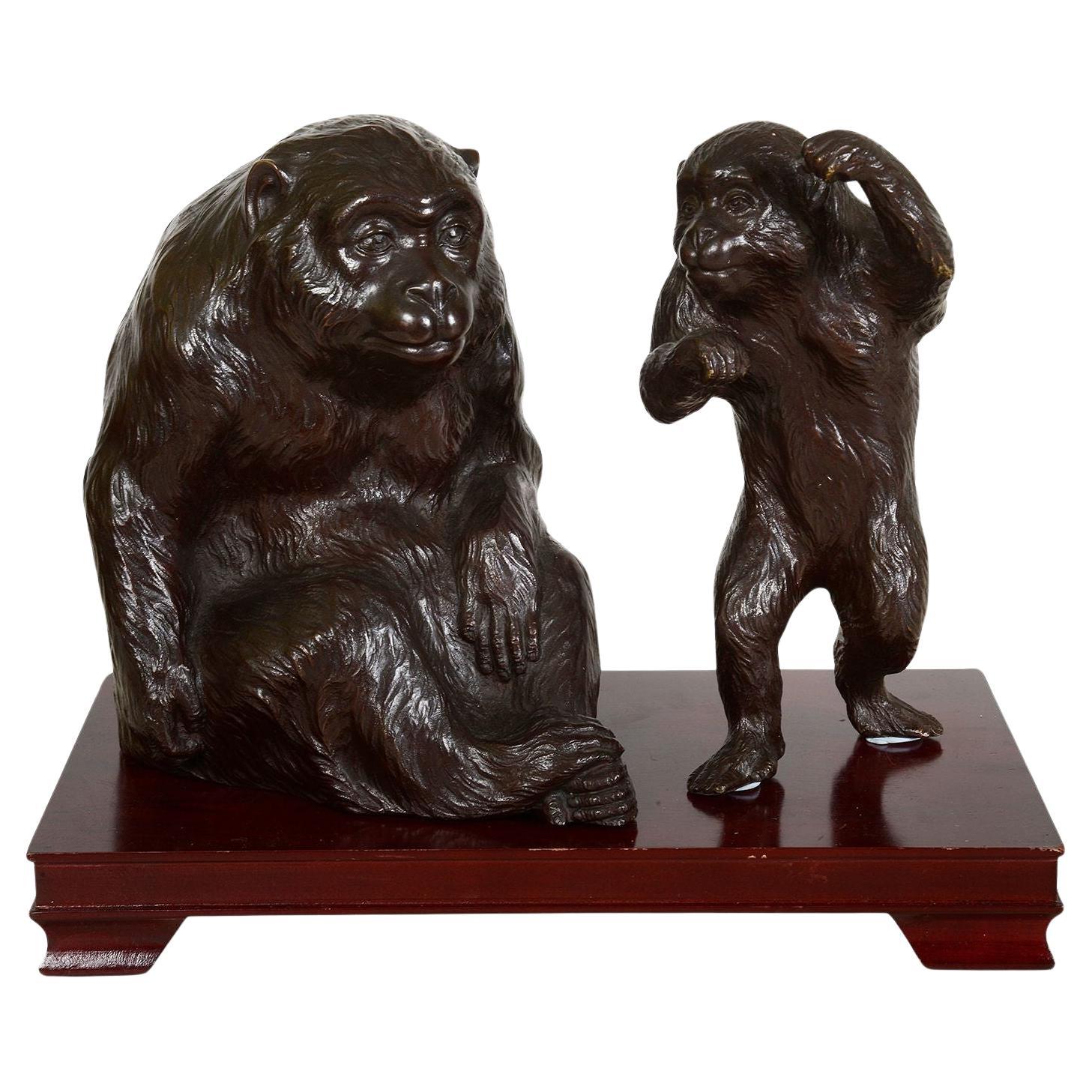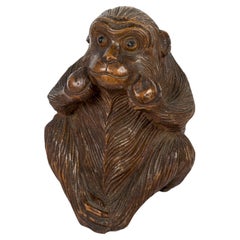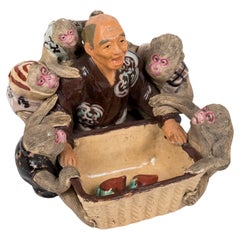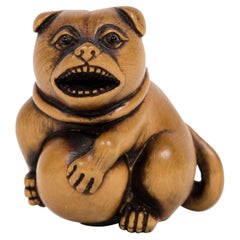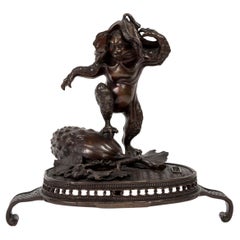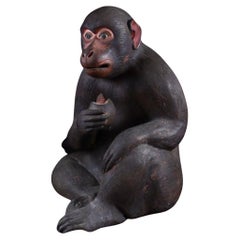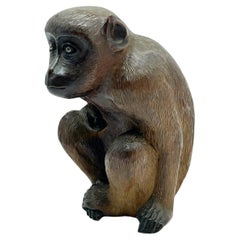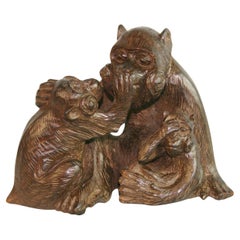Items Similar to Japanese Monkey Suaka
Want more images or videos?
Request additional images or videos from the seller
1 of 8
Japanese Monkey Suaka
$2,161.78
£1,592.14
€1,800
CA$2,940.93
A$3,268.02
CHF 1,712.48
MX$40,076.42
NOK 21,841.64
SEK 20,547.81
DKK 13,703.12
Shipping
Retrieving quote...The 1stDibs Promise:
Authenticity Guarantee,
Money-Back Guarantee,
24-Hour Cancellation
About the Item
Bronze sculpture of a monkey laying on a golden brass tray adorned with copper
leaves. This sculpture is made of sentoku and shibuchi bronze with a very interesting
suaka patina.
Japan – Meiji period (1868-1912)
Diameter of the tray : 10 cm
Monkey : Height : 5 cm – length : 3.5 cm
- Dimensions:Height: 1.97 in (5 cm)Diameter: 3.94 in (10 cm)
- Materials and Techniques:
- Place of Origin:
- Period:
- Date of Manufacture:1868-1912
- Condition:Wear consistent with age and use.
- Seller Location:PARIS, FR
- Reference Number:Seller: 2024-13061stDibs: LU8311242492102
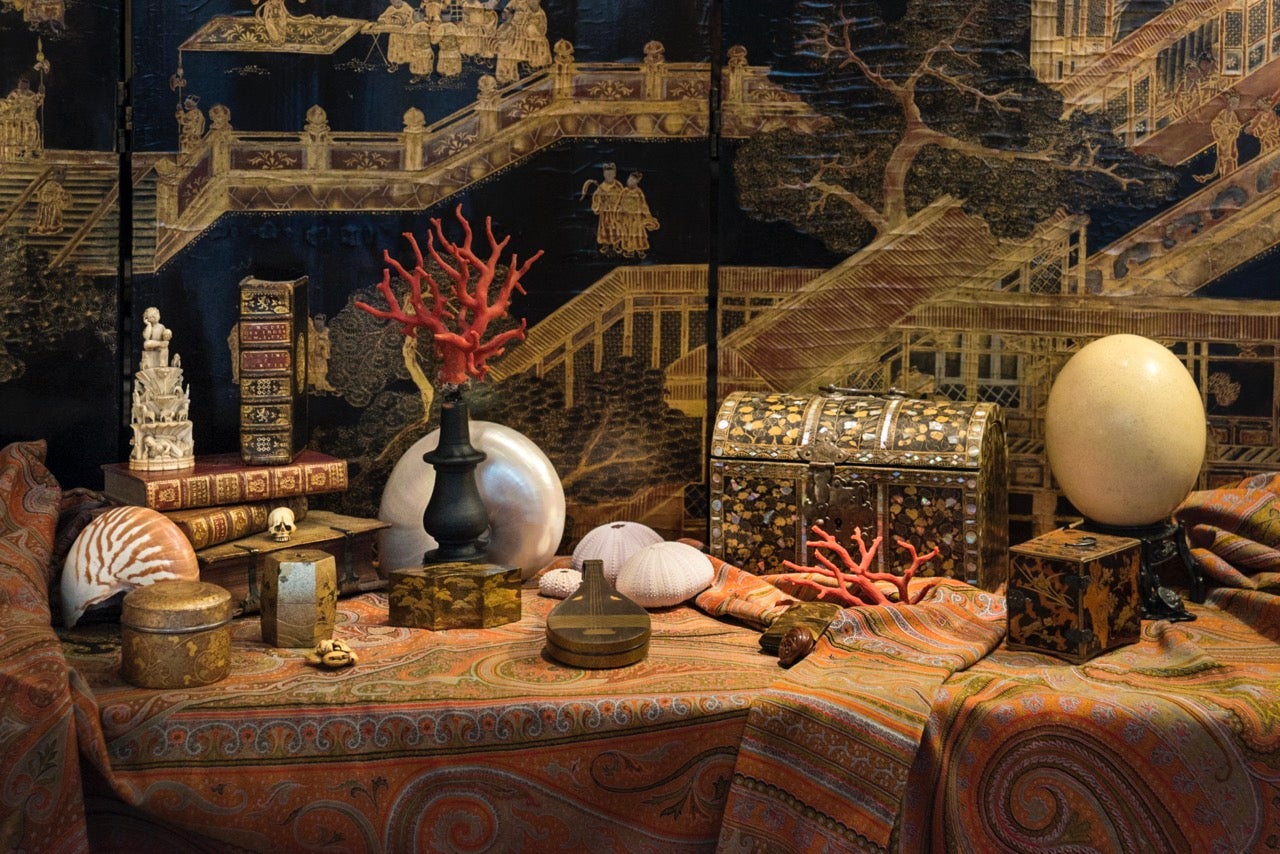
About the Seller
No Reviews Yet
Vetted Professional Seller
Every seller passes strict standards for authenticity and reliability
Established in 2013
1stDibs seller since 2023
Typical response time: Several days
- ShippingRetrieving quote...Shipping from: PARIS, France
- Return Policy
Authenticity Guarantee
In the unlikely event there’s an issue with an item’s authenticity, contact us within 1 year for a full refund. DetailsMoney-Back Guarantee
If your item is not as described, is damaged in transit, or does not arrive, contact us within 7 days for a full refund. Details24-Hour Cancellation
You have a 24-hour grace period in which to reconsider your purchase, with no questions asked.Vetted Professional Sellers
Our world-class sellers must adhere to strict standards for service and quality, maintaining the integrity of our listings.Price-Match Guarantee
If you find that a seller listed the same item for a lower price elsewhere, we’ll match it.Trusted Global Delivery
Our best-in-class carrier network provides specialized shipping options worldwide, including custom delivery.More From This Seller
View AllJapanese bamboo sculpture of a Monkey holding Longevity Peaches in its two hands
Located in PARIS, FR
Chiseled wood sculpture representing a seated monkey holding peaches of longevity in his hands. The impression of the fur is quite realistic, and its e...
Category
Antique Late 19th Century Japanese Meiji Sculptures and Carvings
Materials
Bamboo
Japanese Sumida-Gawa sculpture of a man distributing peaches to its monkeys
Located in PARIS, FR
Polychrome sculpture in Sumida-gawa stoneware, also called Sumida-yaki, representing an old man surrounded by five monkeys in front of a basket containing two nuts. Glazed clothes an...
Category
Antique Late 19th Century Japanese Meiji Ceramics
Materials
Enamel
Japanese Puppy Nestuke in boxwood
Located in PARIS, FR
Netsuke in boxwood representing a puppy with incrusted eyes made of buffalo horns. Its mouth is open, as if it was barking, it also wears a knotted collar and holds a ball between it...
Category
Antique Mid-19th Century Japanese Edo Sculptures and Carvings
Materials
Boxwood
Japanese Bronze Kappa
Located in PARIS, FR
Dark brown patina bronze figure of a standing kappa with its right leg leaning on a cucumber. The figure is put on four-legged rattan-like bronze stand.
The kappa (??) is a aquatic creature taken from Japanese folklore having the appearance of an anthropomorphic turtle.
His skull is either slightly hollowed out to accommodate water, from which it derives its power, or hidden with a water lily leaf hiding this sag. Naturally polite, it is advisable to bow to him in order that it should do so in return, thus losing all the water he has gathered and leaving it harmless.
Kappa has the reputation of attempting to lure both humans and animals into the water. In some areas, it ravages fields, stealing eggplants and cucumbers. Some people prefer to worship it and give it offerings rather than be its victims.
Signed Shokaken (???). His real name is Ôshima Yasutarô. He was born in 1849 and is the third generation of a metalworkers family. Together with his brother Ôshima Joun...
Category
Antique Late 19th Century Japanese Metalwork
Materials
Bronze
$5,404
Netsuke in the form of a No mask representing the character of Hyottoko
Located in PARIS, FR
Boxwood netsuke representing the mask of Hyottoko in Noh theatre.
Hyottoko is a legendary comic character, considered to be a fire god in certain regions of north-east Japan. The sha...
Category
Antique Late 19th Century Japanese Edo Sculptures and Carvings
Materials
Boxwood
Japanese okimono sculpture of a lying puppy with its head facing its rear
Located in PARIS, FR
Bronze okimono sculpture with a deep brown patina, of a lying puppy, probably of shiba inu breed, represented with its head facing its rear. This kind of subject is common in traditi...
Category
Antique Late 19th Century Japanese Meiji Metalwork
Materials
Bronze
You May Also Like
Rare Edo Period traditional Dojin-yaki finely Carved Monkey Figurine
Located in Fukuoka, JP
This exceptional Edo-period sculpture depicts a seated monkey in an incredibly lifelike manner, with finely carved details and expressive features. Made using traditional Dojin-yaki ...
Category
Antique 18th Century Japanese Edo Sculptures and Carvings
Materials
Clay
19th Century 'Meiji Period' Japanese Carved Wood Seated Monkey Sculpture
Located in North Miami, FL
19th Century (Meiji Period) Japanese hand-carved wood seated monkey. The eyes are inlaid and made of glass. The fur and details are very realistic. The piece is signed on the bottom ...
Category
Antique 19th Century Japanese Meiji Animal Sculptures
Materials
Glass, Wood
Japanese Statue Bizen Pottery Monkey by Koyama Isso, 20th Century
Located in Amsterdam, Noord Holland
1932- bizen pottery of a sitting Monkey. Marked at the back.
Real name is Mitsuo. Eldest son of Koyama Gengo, pen name is Koyama Isso. Worked for a local brickmaking company but lat...
Category
20th Century Japanese Edo Animal Sculptures
Materials
Porcelain
Japanese Hand Carved Monkey Family Sculpture Hear, See and Speak No Emil
Located in Douglas Manor, NY
1276 Japanese hand carved hardwood monkey family sculpture.
Fine detail.
Category
Mid-20th Century Sculptures and Carvings
Materials
Hardwood
Meiji period Japanese bronze Monkeys.
Located in Brighton, Sussex
These exquisite Japanese Meiji period sculptures depict two patinated bronze monkeys, showcasing the artistry and craftsmanship of the era. The larger monkey, seated with a contempla...
Category
Antique Late 19th Century Japanese Sculptures and Carvings
Materials
Bronze
Antique Netsuke Japanese Monkey Thinking Sculpture Meiji Period, 19/20th Century
Located in Amsterdam, Noord Holland
Lovely and very detailed piece. Unsigned. Japan 19th or 20th century.
Provenance: From the collection of Clemens Merkelbach van Enkhuizen, A well known Dutch painter and artist from...
Category
Antique 19th Century Japanese Edo Animal Sculptures
Materials
Porcelain
